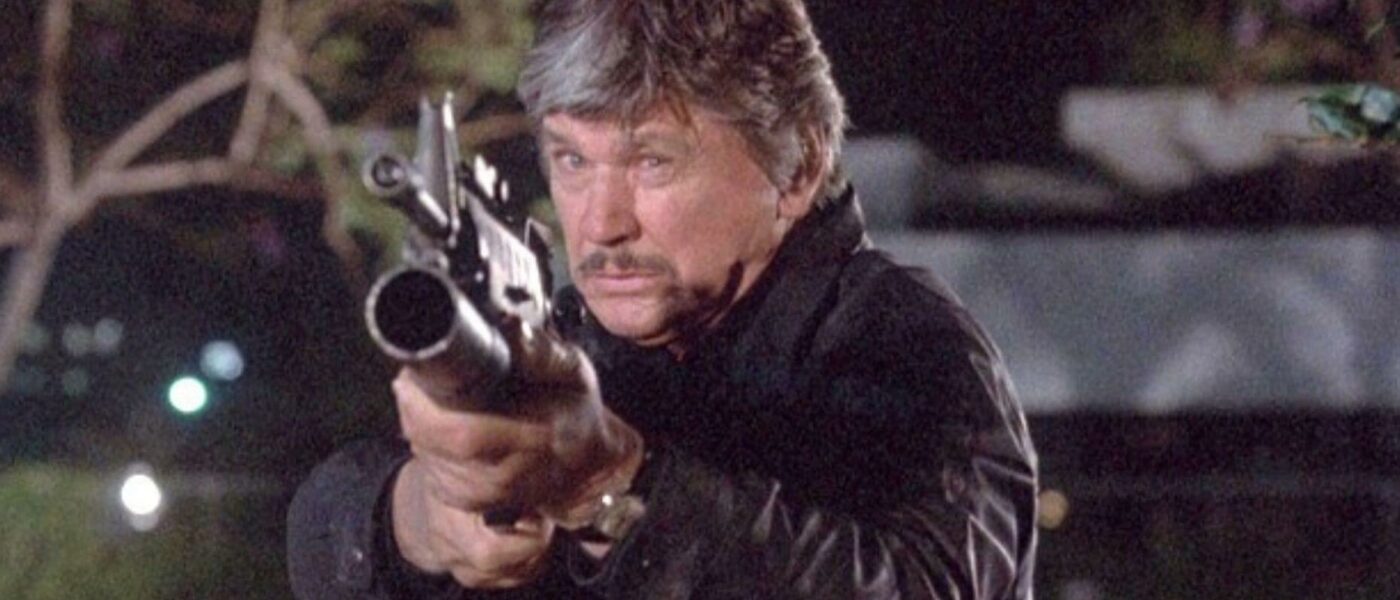Old Man Death’s Final Return(s)
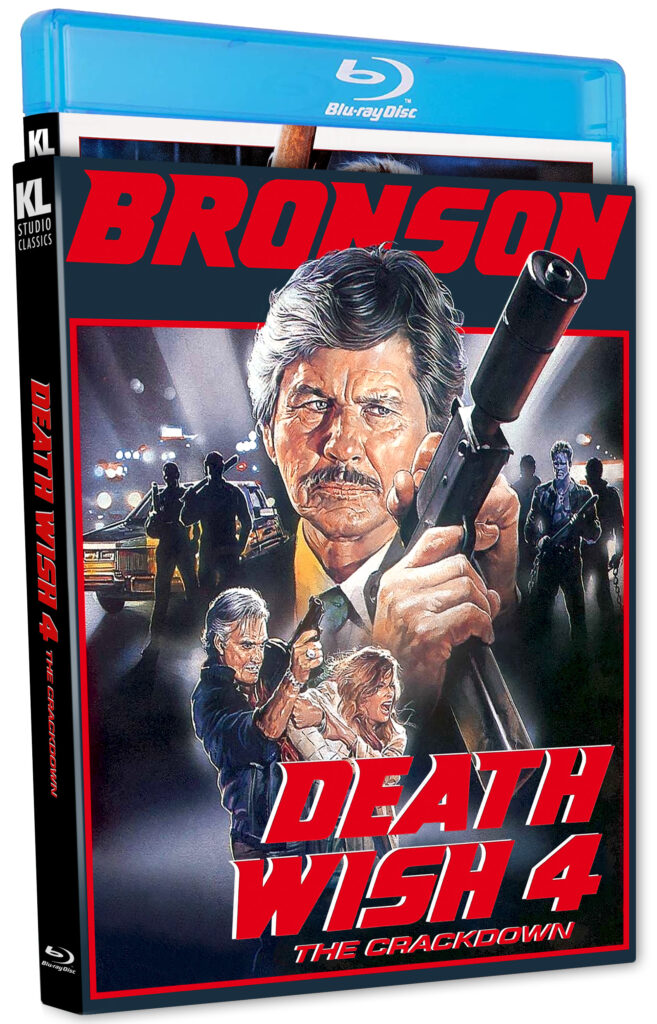
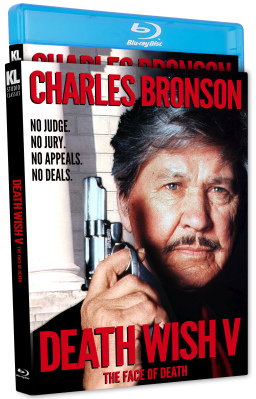
DIRECTED BY J. LEE THOMPSON (4) & ALLAN A. GOLDSTEIN (V)
STREET DATES: SEPTEMBER 26TH, 2023/KINO LORBER STUDIO CLASSICS
The end is never pretty. So after two decades and five films, it is perhaps appropriate that Charles Bronson as romantically and paternally beleaguered architect Paul Kersey, successively and sequel-numerically losing a wife, daughter, daughter-figure, girlfriend, and fiancee to rampant criminality and social lawlessness, should again and again (and again…) have violent recourse to his considerable arsenal of weaponry, wits, and stony implacability. Death Wish (1974) had been a serious and realistic indictment of both urban decay and a good man’s terrifying response to it; not condoning his actions but showing how a murderous course, no matter how justified, inevitably becomes part of the same evil that perpetrated it. And while the sequels quickly lost sight of this artistic impetus with Kersey’s thematically diminishing returns, their entertainment factor nonetheless increased along with Bronson’s ruthlessly efficient killing machine being put on mayhem-mounting auto-pilot.
The dark irreverence and over-the-top satire of original series director Michael Winner gives way to an effective if boilerplate entry from frequent Bronson collaborator J. Lee Thompson, before coming back “home”, so to speak with a Toronto-dressed, New York City-set evisceration of the fashion- and mob-world helmed by Canadian writer-director Allan A. Goldstein. Approaching spooky season and the month of October, Kino Lorber Studio Classics gives those of us who may not have made it this far in the series a chance to catch up with Paul Kersey, his Vigilante Killer having had as many screen go-rounds as any self-created Frankenstein, in Charles Bronson’s final appearance(s) as his signature Death Wish character.
DEATH WISH 4: THE CRACKDOWN (1987)
DIR. J. LEE THOMPSON
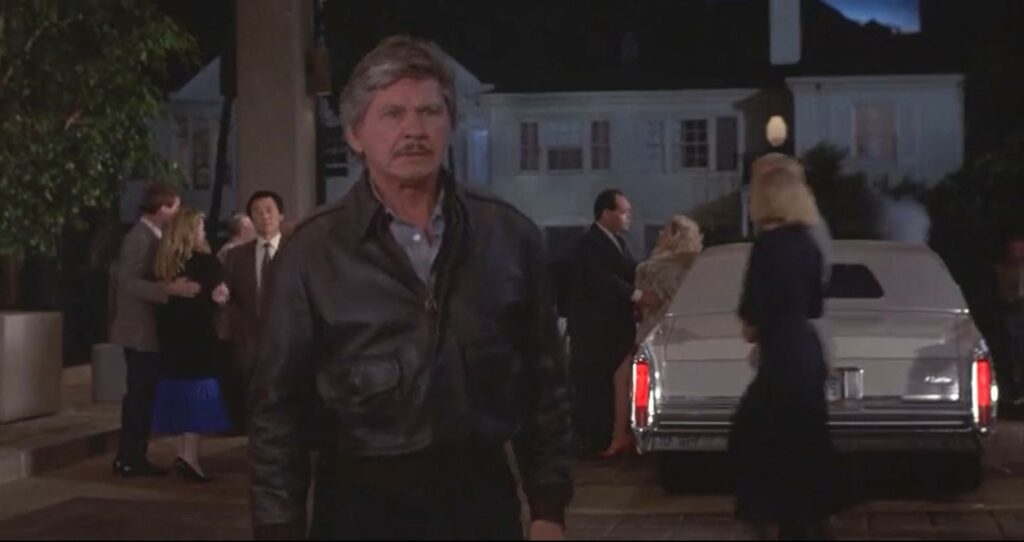
After a tense and suspenseful opening sequence, in which Kersey (Bronson) in full vigilante mode takes on three stocking-masked thugs in a parking garage, the third Death Wish sequel unexpectedly shifts gears, following Kersey as a now-settled Los Angeles architect with a smart journalist girlfriend (Kay Lenz) whose bright, talented daughter (Dana Barron) looks up to him as a father. Unfortunately, the local drug trade preys fatally on innocent area kids like his girlfriend’s daughter, which causes the Vigilante Killer’s quick return. Kersey, sponsored by a mysterious newspaper magnate (John P. Ryan) – who relates that he also lost a daughter to drugs – is soon dusting off his automatic pistol, rifle, and grenade-launcher in pitting rival gangs led by Ed Zacharias (Perry Lopez) and the Romero brothers (Dan Ferro, Mike Moroff) against each other. Pursued himself by LA detectives Reiner and Nozacki (George Dickerson, Soon-teck Oh), “those damn drugs!” have further unwelcome surprises in store for vigilante Kersey, climaxing in an all-in shoot-out at a youth roller-disco, where the very kids he’s trying to protect become background targets for his all-out war on those damnable drugs.
J. Lee Thompson, in his seventh and second-to-last film with Bronson, jettisons some of the more controversial aspects of Michael Winner’s previous two Cannon-produced Death Wish sequels; instead delivering a competent late ’80s action-flick more in line with the director’s previous Bronson-led rogue-cop melodramas 10 to Midnight (1983), Murphy’s Law (1986), and the subsequent Kinjite: Forbidden Subjects (1989). Kersey “cracking down on crack!” is a decent enough snapshot of its entertainment era, in effect avenging all of Nancy Reagan’s youths who didn’t say no, while simultaneously displaying enough military firepower to invade a small country. Bronson himself appears to have tuned out halfway through filming, and his final walkaway might as well be by remote control, but Gail Morgan Hickman’s twisty-turny script effectively maintains viewer interest through the end, and “4” is overall much better than any third sequel probably has a right to be. In addition, The Crackdown rivals the low/high watermark, depending on how you look at it, of Death Wish 3 (1985) for sheer body-count, its inventive approach to bloodletting, corpse-making, and dummy-deaths extending to the fiery fate of the last villain “standing”, whose identity and method of dispatch will not be revealed here. Otherwise, I personally enjoyed spotting the many contemporary CG production posters adorning a video store and later a movie-lobby, Runaway Train (1985) and Otello (1982) being among the grunge-studio’s more prestigious offerings, that are worth the price of the disc alone for being clearly visible in high definition.
DEATH WISH V: THE FACE OF DEATH (1994)
DIR. ALLAN A. GOLDSTEIN
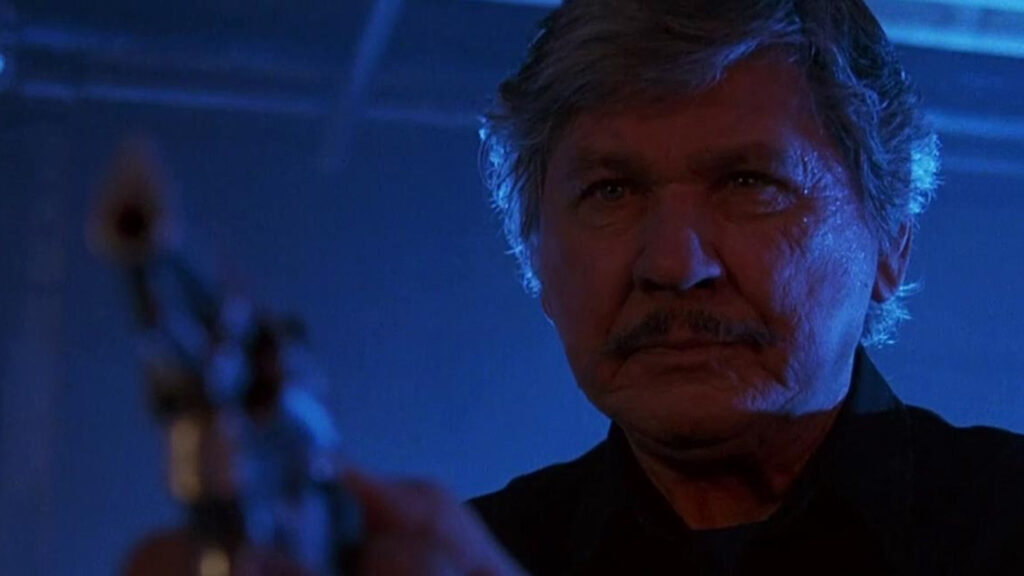
“V” places its ominous roman numeral smack-dab between a title that begins and ends with “Death”, its “Face” now a little bloated and its body a bit heavier with the years, but still gamely huffing and wheezing away at an impressively active 72 years of age. Seemingly retired as the vigilante, and living under a new identity in his native New York City, Paul Kersey once again has a serious romantic interest in fashion designer Olivia Regent (Lesley Anne-Down), and a protective interest in her young daughter Chelsea (Erica Fairfield), which unsurprisingly are both put to the supreme test by psychopathic ex-husband and biological father Tommy O’Shea (Michael Parks), a mob-connected gangleader who retains a financial and proprietary interest in his ex-wife’s textile empire. Kersey as “Professor Stewart” is soon coaxed out of witness protection when O’Shea makes his move on Regent at a crowded nightspot, sending in gender-bending henchperson “Freddie Flakes” (Robert Joy), a dandruff-afflicted assassin with a taste for black leather, to literally rearrange her face with a bathroom mirror when she threatens to turn state’s evidence. Turning his back on the law past further sickeningly violent reprisal, and long past whatever (compromised) protection has been offered by ineffectual city and state prosecutor Brian Hoyle (Saul Rubinek), Kersey easily shrugs off half-hearted pursuit by a Lieutenant King (Kenneth Welsh) in one-by-one eliminating every member of O’Shea’s mob before inevitably showing the evil mobster his own fatal visage.
While the actual body-count is numerically lower in Kersey’s final outing, the sex, violence, and sadism is amped up to impressively gratuitous extremes. (“Death by cannoli” and a creative alternative to liposuction being among the more outrageously extreme “gratuities”.) Also the one Death Wish with a full orchestral score, the jazz-tinged wailings and funk-beats inspired by the first film’s composer Herbie Hancock here replaced with Terry Plumber’s überdramatic electric-strings arrangements, the mid-nineties are also more readily apparent in the film’s tighter-shot, less classically-composed approach to its many pursuits, sieges, and shootouts; complete with fog-machine and blue-backlighting in its garment warehouse-set climactic sequence. Past the demise of Cannon Group, Golan, minus, Globus, brings his belated tax-break production to Toronto, Canada, its trash-dressed city-streets doubling for downtown New York City. A low-rent affair overall landing somewhere between a TV-movie or direct-to-video offering of its era, Face of Death is nevertheless effective for, despite, or even because of its inherent shortcomings. As a trivia(l) sidenote, Twin Peaks fans recognizing Parks and Welsh will find further frissons of familiarity first in the mentioned face-to-vanity mirror smashing and second in a baddie Kersey ingeniously machine-wraps in industrial-plastic. Coincidence? Intentional? Perhaps, perhaps not. But “V” is ultimately notable as an entirely competent actioner simultaneously enjoyable for being beginning-to-end ridiculous; with one level of enjoyment taking nothing away from the other.
…
With its collectible slipcover packaging, “4” in addition offering alternative art on its inner cover, Kino Lorber Studio Classics is again to be commended for lavishing such attention and care on their latest Charles Bronson releases, in effect celebrating the often neglected later part of the star’s 45-year screen career. “V” was in fact Bronson’s final theatrical release, so it is fitting that the full breadth of his most popular series – down to the bitter end! – should be available in appropriately competent (if not exactly eye-popping) high definition Blu-ray.
Regarding canonization of these Cannon and Cannon-related films, ironic, intentional, or otherwise, I might here note a vaguely heated discussion with a knowledgeable former work colleague on the Death Wish series as a whole, where he referred to its five-movie viewing-trajectory as “a wet-dream for the conceal-and-carry crowd”. Which, while acknowledging an amusing sentiment, I admit to finding both a willful misunderstanding of the first film and a vast overestimation of its increasingly and memorably unhinged sequels. One might take “II” and maybe “3” somewhat seriously as over-the-top satire, while also squirming in one’s seat at director Michael Winner’s seeming pleasure in depicting graphic sexual violence, but “4” and especially “V” (how and why did the marketing guys decide whether to use roman numerals, by the way?) are pure action-fantasy, the stuff of men’s adventure-literature and pulp fiction, and are on no level meant to ‘carry’ social or political commentary, concealed or otherwise.
Bronson’s Loose author Paul Talbot in fact makes this very point on his dual commentaries included on these separate Death Wish disc, while delivering all the vital/fatal statistics any true Bronson fan would want to hear: including what sort of alcoholic beverage he limited himself to once per month, how Bronson had it stipulated in his contracts that he’d keep anything he wore onscreen, how he’d throw his entire weight into each punch by twisting his hips, how he achieved his “perfectly-balanced” running-style, and so on. (As a special treat, in the final moment of Face of Death we even learn the total body-count across all five Death Wish films, along with the subtotal of those personally dispatched by Paul Kersey.) Talbot has made a seeming career out of being “obsessed with all things Bronson”, and while I have in the past hoped for a more analytical approach to Bronson’s better films, I have grown to appreciate Talbot’s wealth of relevant trivia and his rigorous research for its organization and clarity. In the end, I think this is the sort of critical attention Bronson himself would have most appreciated: leaving no gun-caliber, weapon-type, car-model, or martial art un-cataloged or misidentified. Like the man himself, nothing more needs to be said.
The images used in this review are only a visual reference to the films and do not reflect the image quality of Kino Lorber Studio Classics’ Blu-ray.


